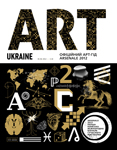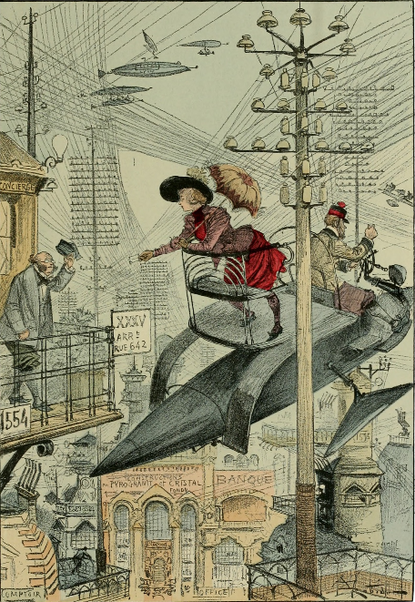Stone babas: a modern viewpoint
ARSENALE 2012, the First Kyiv International Biennale of Contemporary Art, ‘Mystetsky Arsenal’ has prepared a main project which represents about a hundred statuary monuments, known as stone babas. They will be placed in the courtyard of the National Cultural-Art and Museum Complex.

Photo: Oleksandr Dirdovsky

ART UKRAINE № 3(28) May-June 2012. Heading PANORAMA.UA
The main project is called ‘Ancient forms: a modern point of view’ and aims to represent one of the primary sources of the plastic arts of the territory of Ukraine.
For the opening of ARSENALE 2012, about a hundred of stone babas will be placed in the territory of the historical landscape ‘Mystetsky Arsenal’ along the former ramparts of the Old Pecherska fortress. These authentic exhibits will be brought from the collections of such museums as ‘Dnipropetrovsk National Historical Museum named after D. I. Yavornitskiy’, ‘Kherson museum of regional ethnography’, ‘Zaporizhia museum of regional ethnography’, ‘National historical-ethnographic nature reserve ‘Pereyaslav’, ‘Bakhchisaray historical and cultural state preserve’, ‘Yevpatoria museum of regional ethnography’, ‘Private historical-ethnographic museum ‘Cossack lands of Ukraine’.
Such project format gives everyone a unique opportunity to see the collections of the above-mentioned museums. At the same time it is an attempt to trace the influence of archaic traditions o the art development until the present day, to show a universal primary source of sculptural form that served as a reference to many artists during many centuries.

Kairy village, kherson oblast. Storage: Nature history museum of Kherson oblast
The importance of the project lies in the fact that the artistic heritage of Ukraine is presented as a significant and equal part of the world cultural achievement.
When it concerns ancient civilizations, we intuitively think of palaeolithic Venus figurines, neolithic menhirs and megaliths, Egyptian pyramids and Pharaohs statues,
Sumerian and Akkadian idols, Greek kouroi and korai or even Moai statues from Easter Island. Usually, we do not know what they are called or to which time period they belong.. While no one mentioned steppe stone stelae when talking about Ukraine.
People think rather of Ukrainian icons as wooden churches and monuments from further epochs of Ukrainian art, such as baroque.

The middle — the end of 3d century BC, Chornobajivka village, Kherson oblast Storage: Nature history museum of Kherson oblast
But still our country has a worthy representative who can become a generally recognizable symbol and thus supplement a logical and associative array of world masterpieces of ancient art. To get ready to perceive of such a large quantity of statues that will be exhibited on the territory of Mystetsky Arsenal, one should understand their origin and classification. So let us look in detail at these mysterious ‘stone babas’, everyone has heard a lot about and met in different corners of the country that are usually called ‘Scythian babas’ by mistake.
Well, in fact, this name ‘Scythian babas’ has the right to exist though it only concerns the stone statues of the Scythian nomadic tribal culture. One should not believe the word ‘baba’ signifies a woman statue (baba – grandmother in Ukrainian). The word ‘baba’ (‘bovvan’) comes from the Turkic word ‘balbal’ meaning "ancestor" or "grandfather’. So the term ‘stone baba’ refers to monumental stone sculptures that portray both male and female figures.
The creation of such sculptures is connected with the tradition of steppe tumuli or kurgans – high funeral structures that were raised above their ancestors' graves.

The middle — the end of 3d century BC, Chornobajivka village, Kherson oblast Storage: Nature history museum of Kherson oblast
Stone ceilings were installed on the top of the kurgans.
They personified their deceased ancestors and helped them to pass over into the next world. Such was the perception of the world within cattle nomads that moved across Ukrainian steppe – they believed the souls of the dead were reborn with the sunrise. So the steppe kurgan, in fact, had the same function as Egyptian pyramids for example.
The first appearance of sculptures in the territory of Ukraine goes back to the early period of the Copper Age (The Neolithic period, 4000 – 3000 years b.c.), when the first tribes of cattle-breeders started coming to Ukrainian steppes and began the tradition of cultic monumental funeral architecture – construction of kurgans. Subjugating the steppe, they built (above the burial places) stone and earth structures and installed simple vertical oblong stones near these graves.
At the end of the Copper Age appeared accurately worked right-angled stones made of the limestone or sandstone slabs. Also, at the same time, their forms acquired anthropomorphic features. The origins of this tradition should be looked for in the influence of the Trypillian culture - farmers' society that lived nearby in the forest-steppe right-bank part of Ukraine.
Man statue. Scythians. 5th century BCStorage: Archaeological museumof the Archaeology institute NAS of Ukraine
A borrowed idea survived a certain adaptation in the society of cattle-breeders who developed a male image of the tribal chief while for the farmer Trypillians, it was traditional for a female image of the mother goddess.
When the Trypillian civilization disappeared, a so called Yamna culture was formed in the steppe zone. They had a well-developed cattle-breeding economy, they actively used stone sculptures in their funeral practices. It was the early period of the Bronze Age – first half of the 3rd millennium BC.
A widespread form of sculptures were steles of a simplified anthropomorphic type that were formed of flat right-angled stone plates. Their lower part was not worked as it was meant to be dug into the ground, though they had carefully shaped shoulders and heads with well carved facial characteristics.
Most of the steles were destined for vertical installations, though some of the monuments were used during the funeral ritual when, after the sacrifices, in front of the stele they were buried together with the deceased.
In that case it had the function of a bearer of a personified character / image of the dead.
Together with steles, existed the sculptures with more accurate anthropomorphic traits – idols. Unlike steles the idols had a greater variety of form and more complex images on their surface.
Statues of man and woman. Polovtsians. 11–13 century. Storage: Dnepropetrovsk national Historical Museumnamed after D.i. Yavornytsky
Photo: Oleksandr Dirdovsky
The emphasizing of physical traits is peculiar to sculptural idols: from facial characteristics, ribs, folded shoulder-blades up to the accent on male image. It was obligatory to representation such elements as axes, bows, quivers, crooks that indicated a high social status of men. The existence of such idols is connected with the cult of the god of armies. Actually the formation of such an image of man in the cults of cattle-breeders coincided with the domination of patriarchal relations where the man had a special status of a chieftain and a deity. By the end of the Bronze Age the usage of cult stone sculptures within cattle-breeders was far less popular and the next stage for its development came at the beginning of the Iron Age (1st millennium BC) with the appearance of such nomadic tribes as Cimmerians, Scythians and Polovtsians.
Cimmerian statues have short trunks like the statues that depict warriors-riders similar to the Bronze Age idols. Such monuments are very rare in the territory of Ukraine.
Scythian statues – monumental sculptures of Iranian-speaking tribes of Scythians that lived in the VII – III centuries BC. There are two types of these monuments.
First – simple anthropomorphic forms with clearly depicted trunk, shoulders and head but without an excessive accent on details.
Second – male statues with distinct faces and lowered moustaches. These are chieftain-warriors with axes, quivers and rhytons (horn-shaped container from which fluids were intended to be drunk ) in their hands. Another typical characteristic – folded hands on chest.
Traditionally such statues were placed on the kurgans of the Scythian elite.
It is still unclear why the techniques to produce these statues were so primitive, as it is quite strange for the ethnicity that was a bearer of the Scythian art and was very similar to ancient Greek classical tradition.
Woman statue. Polovtsians. 11–13 century. Storage: Dnepropetrovsk national Historical Museumnamed after D.i. Yavornytsky
Photo: Oleksandr Dirdovsky
Also worth mentioning are Polovtsian (Cuman) stone babas. There are about two thousand of them left. They are usually found in groups of 2 – 3 statues on the highest parts of steppe – on the sanctuaries of the funeral cult of ancestors. Polovtsian statues symbolized their ancestors and were not directly connected with the burial ritual.
Earlier examples were stele like flat statues where figure details are either unclear or totally absent.
They were roughly dressed stone pillars, sometimes heart-shaped at the top. Such figures first appeared in the Don steppe at the beginning of the XI century.
With time, in the territory from Seversky Donets to Priazovie appeared another type of Polovtsian statue – with salient chest and hands that held bowls on their stomach. Male statues were always depicted with moustaches or beards and female statues with small lips.
Female statues symbolized the invincibility and immortality of the warriors. Images of women protectors guarded them and gave them strength.
The twelfth century is considered to be a time of growth and popularization of the Polovtsian sculptures – a time of a great number of orders that stimulated production and thousands of statues were produced in the Polovtsian workshops. At the end of the century a visible simplification of form took place when the back of the statue was not decorated, also the details of haircuts and costumes were missing on the front side.
Over the centuries the number of Polovtsian babas decreased. Their first destruction was carried out by Tatars-Mongols, who used to totally destroy the cult of the conquered ethnicity.
Up until the nineteenth century, stone babas stood in the noticeable parts of Ukrainian steppe indicating main roads and their turn-offs. By the end of the nineteenth century people lost respect for these monuments – almost all of them were moved from their original locations. Local inhabitants decorated private parks with them or used them as construction material or as boundary markings, angular supports in housing or utility buildings, fence pillars or as grindstones for hoes, axes and knives. As a result most of the small statue details were lost forever...
A legend exists about the origin of stone babas. Long ago, on Earth, lived giant robust men warriors. They decided to conquer the sun and started hunting. The sun got angry and turned those men into stones.
In ancient times in the territory of Rus' Stone statues were called ‘Bovvans’.
The word ‘baba’ (‘bovvan’) comes from Turkic ‘balbal’ meaning "ancestor" or "grandfather".
Vera Ganzha










